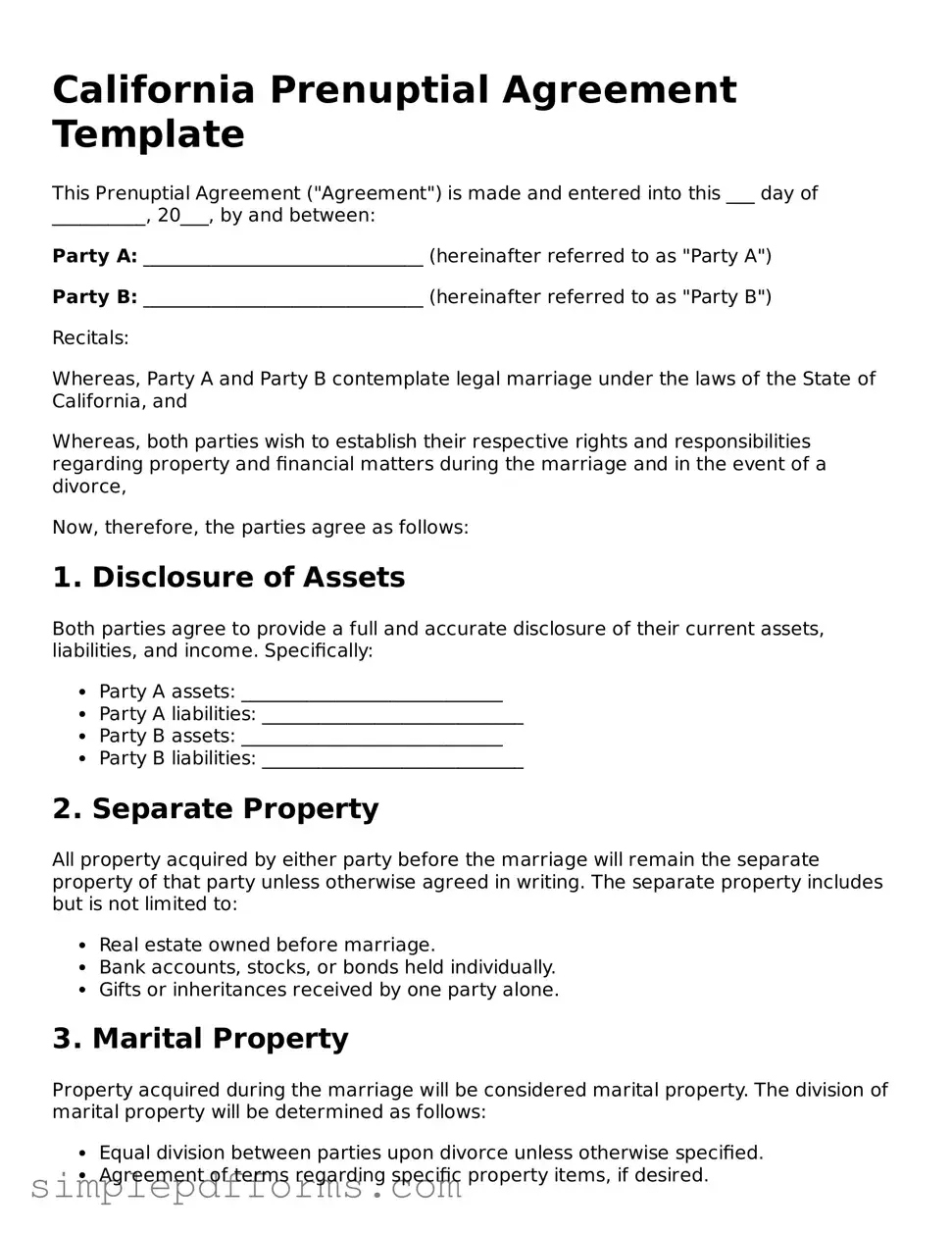California Prenuptial Agreement Template
This Prenuptial Agreement ("Agreement") is made and entered into this ___ day of __________, 20___, by and between:
Party A: ______________________________ (hereinafter referred to as "Party A")
Party B: ______________________________ (hereinafter referred to as "Party B")
Recitals:
Whereas, Party A and Party B contemplate legal marriage under the laws of the State of California, and
Whereas, both parties wish to establish their respective rights and responsibilities regarding property and financial matters during the marriage and in the event of a divorce,
Now, therefore, the parties agree as follows:
1. Disclosure of Assets
Both parties agree to provide a full and accurate disclosure of their current assets, liabilities, and income. Specifically:
- Party A assets: ____________________________
- Party A liabilities: ____________________________
- Party B assets: ____________________________
- Party B liabilities: ____________________________
2. Separate Property
All property acquired by either party before the marriage will remain the separate property of that party unless otherwise agreed in writing. The separate property includes but is not limited to:
- Real estate owned before marriage.
- Bank accounts, stocks, or bonds held individually.
- Gifts or inheritances received by one party alone.
3. Marital Property
Property acquired during the marriage will be considered marital property. The division of marital property will be determined as follows:
- Equal division between parties upon divorce unless otherwise specified.
- Agreement of terms regarding specific property items, if desired.
4. Spousal Support
In the event of divorce, the parties agree on the following regarding spousal support:
- Party A will not seek spousal support from Party B, or
- Party B will not seek spousal support from Party A.
(Please specify any exceptions or additional terms as needed)
5. Amendments
This Agreement may be amended only in writing, signed by both parties, with the same legal formalities as this Agreement.
6. Governing Law
This Agreement will be governed by and construed in accordance with the laws of the State of California.
Signatures
By signing below, both parties acknowledge they have read, understood, and agreed to the terms of this Prenuptial Agreement.
_______________________________
Party A (Signature)
Date: _______________
_______________________________
Party B (Signature)
Date: _______________
_______________________________
Witness (if applicable)
Date: _______________
This Prenuptial Agreement is effective upon the marriage of the parties.
